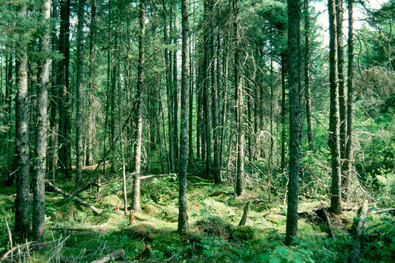The climate in temperate deciduous forests can be likened to an artist’s palette, bursting forth with vibrant hues that change with the shifting seasons. These ecosystems are typically nestled between the polar and tropical regions, characterized by four distinct seasons—each offering its own unique charm and challenges. In exploring the climate of these enchanting forests, we unveil not only the meteorological phenomena but also the intricate interdependencies that sustain these biodiverse habitats.
The temperate deciduous forest climate is shaped by a rich tapestry of atmospheric influences, with a notable variation in temperature and precipitation throughout the year. Generally, temperatures range from a frosty chill in the winter months, dipping as low as -30°F (-34°C), to a balmy warmth in the summer that can exceed 100°F (38°C). This fluctuation sets the stage for a dynamic ecosystem, driving the rhythms of life within the forest.
Precipitation within temperate deciduous forests averages around 30 to 60 inches (76 to 152 cm) annually, manifesting as rain and, in northern areas, snow. The distribution of this precipitation is essential. It is predominantly concentrated in late spring and early summer, aligning with the growing season, while winter months may see a drier spell. This seasonal interplay of moisture fuels the lush greenery and the breathtaking display of autumnal colors, creating a cyclical pattern of life and decay that enriches the soil and nourishes countless species.
Autumn unfolds like a grand performance as trees such as oaks, maples, and birches don their fiery coats of red, orange, and gold. This splendid metamorphosis, known as leaf senescence, is a response to the decreasing daylight and cooler temperatures. The trees begin to photograph the chlorophyll in their leaves, allowing other pigments—carotenoids and anthocyanins—to take center stage. This natural spectacle draws both observant humans and foraging fauna alike, highlighting the interconnectedness inherent within these ecosystems.
Winter, however, introduces a stark contrast, transforming the once-vibrant landscape into a serene wonderland. The weight of snow blankets the branches and cloaks the forest floor, creating a hushed stillness. This period of dormancy is crucial; many species conserve energy and resources, adapting to the scarcity of food. Deciduous trees shed their leaves not just as a seasonal change, but as a survival strategy, curtailing water loss during the frigid months. As the ice thaws, life resurfaces with vigor in the spring, as buds burgeon and flowers unfurl, showcasing nature’s resilience.
The temperate deciduous forest climate also favors a diverse array of flora and fauna. This environment supports a rich biodiversity, with approximately 60-70 different species of trees, alongside a multitude of shrubs, wildflowers, and underbrush that thrive in the forest understory. The climate encourages this diversity, providing varied niches and microclimates that cater to specific species, thus promoting a complex web of interactions among plants, animals, and microorganisms.
Moreover, the presence of varied topography in these regions—a patchwork of valleys, hills, and occasional plateaus—amplifies microclimates. Elevation changes lead to a divergence in temperature and moisture levels, contributing to even greater biodiversity. Some areas may host sun-drenched clearings perfect for wildflowers, while others may be cooler, shaded environments where mosses and ferns flourish.
The interplay of climate, soil, and biological factors culminates in the formation of a unique ecosystem that not only captivates the senses but also serves essential functions. These forests act as carbon sinks, capturing atmospheric carbon dioxide and contributing to climate regulation. Their rich organic matter enriches the soil, fostering growth and creating a system of nutrient cycling that underpins wildlife habitats. They form integral watersheds, controlling water quality and mitigating flooding through their root systems and leaf litter.
As we reflect on the nature of temperate deciduous forest climates, it becomes evident that their seasonal shifts are more than superficial changes; they are cycles laden with purpose and significance. The metamorphosis from lush summers to crisp autumns, through still winters to vibrant springs, encapsulates the essence of renewal—a reminder of nature’s innate ability to adapt and thrive.
In a world increasingly grappling with climate change, the preservation of temperate deciduous forests is paramount. These ecosystems are not merely beautiful landscapes; they are vital, living entities that play a crucial role in sustaining ecological balance. As the climate shifts and human activities encroach upon these habitats, it becomes imperative to advocate their preservation. By safeguarding these forests, we honor not only their present vibrancy but also their ability to deliver ecological benefits for generations to come.
In conclusion, the climate in temperate deciduous forests presents a complex interplay of seasonal changes that not only shape the physical landscape but also define the rich tapestry of life within. The vibrant colors of the seasons, coupled with the intricate relationships among species, reveal a dynamic ecosystem worth understanding and protecting. Each season encapsulates a story, a whispered anecdote of resilience in the face of change, urging us to appreciate and safeguard these magnificent landscapes.








